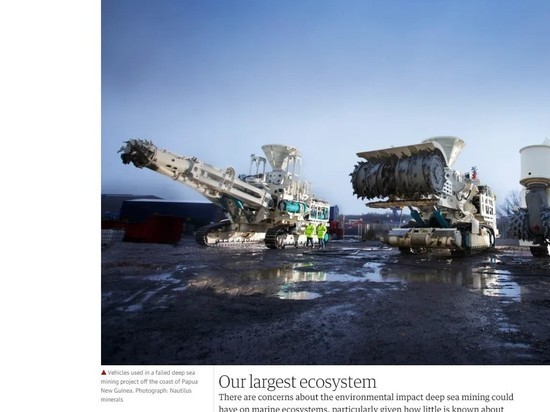
So little is known about what happens deep in the oceans that for 25 years after the discovery of hydrothermal vents, an average of two new vent species are discovered every month. These include the Yeti crab, a ghostly white crustacean with silky bristles on its claws.Others discovered over the past 20 years include the beaked whale and the Greenland shark, which dives to a depth of about 1200 meters and has a life expectancy of about 400 years, making it one of the longest-lived organisms in the world.
“Every time you dive into the depths, you see something incredible and often new,” says Diva Amon, a deep-sea biologist and employee of the Natural History Museum in London, who has made 15 deep-sea expeditions.
“There is a bone worm named Osedax, which lives on the bones of dead whales in the depths.” Another special one was the anemone, whose tentacles were 8 feet long.”
Every time you dive into the depths, you see something incredible and often new, ” says Diva Amon, a deep-sea biologist and employee of the Natural History Museum in London, who has made 15 deep-sea expeditions. “There is a bone worm named Osedax, which lives on the bones of dead whales in the depths.” Another special one was the anemone, whose tentacles were 8 feet long.” The Greenland shark, whose life expectancy is about 400 years.
A professor of oceanography at Dalhousie University in Nova Scotia, Canada, recalls how she first went to the deep sea in the waters near the Bahamas. “The most exciting part of this dive was the bioluminescence. Since it gets dark at 1000 m, they all glow, all blink. I was in an underwater vehicle with a plexiglass sphere, it was likeflight in space”. New frontiers of the mining industry Ninety percent of the ocean – and 50% of the Earth’s surface-is considered a deep sea (areas deeper than 200 meters). Only 0.0001% of the sea floor has been studied. This is dangerous, technically difficult and expensive. But despite these obstacles, companies have set their sights on the seabed as a new frontier for mining.
Since 1982, the International Seabed Agency (ISA), which is charged with regulating human activities on the deep seabed, has issued 30 contracts for mineral exploration over an area of more than 1.4 million square kilometers. Most of these sites are located in the Pacific Ocean, in the Clarion-Clipperton Fault Zone (CCZ).
In particular, companies pay attention to polymetallic nodules – bundles of ore resembling potatoes, which cover the surface of the sea depths and are rich in manganese, nickel, cobalt and rare earth metals. The nodules are up to 10 cm in diameter and are thought to form at a staggeringly slow rate – just a few centimeters every million years.
“The battery in the rock” is how DeepGreen, one of the major players in the emerging industry, describes polymetallic nodules. He touts deep-sea mining as a less environmentally and socially harmful alternative to onshore mining and says it is crucial to influence the transition to a greener economy with nodules containing minerals needed for batteries used in electric vehicles.
“Society is experiencing an acute growing need for metal batteries to ensure a complete transition to clean energy and electric vehicles. We believe that polymetallic nodules are the purest source of these metals with the lightest planetary impact, ” the company said in a statement on its website.
His proposal is to send ships to the ZCC and suck up nodules through long pipes stretching to the seabed. The nodules will be processed on the ship, and the excess sediment will be pumped back into the sea.
So far, licenses in international waters have been issued only for exploration, not for production, but the ISA is working on a regulatory framework for the development of sea depths, and DeepGreen says that it will be ready to start work by 2024.
There are concerns about the environmental impact of deep-sea mining on marine ecosystems, especially given how little is known about them and the very slow rate of reproduction and growth at these depths.
A 1978 experiment involving the extraction of nodules from the seabed in the ZCC showed how long the damage can be. The area was re-visited in 2004, and researchers found that the traces left by mining machines 26 years ago were still clearly visible on the seabed.The diversity of organisms in the disturbed area has also decreased.Fiji and Vanuatu have called for a moratorium on the deep-sea subsurface of the Pacific Ocean.
“You are talking about the destruction of the habitat on the seabed. Any territory that you develop will be destroyed, ” says Duncan Curry, an international lawyer who has worked in the field of ocean law for 30 years.He represents the Coalition for the Preservation of the Deep Sea, which calls for a moratorium on the development of deep-sea mining.
Amon was part of a project that conducted basic research in the CCZ area, for which the UK has a license to explore for potential production.
“As part of the work we did, we found that of the megafauna, larger animals, more than half of them were completely new to science, and more than half of them relied on nodules as the surface to which they attached themselves. . Things like corals, sponges, anemones – they really need nodules.So potentially mining in this area can have quite serious consequences.
“It’s also our largest ecosystem, so it provides about 96% of all habitable space on Earth,” says Amon. “I think most people still believe that this space is just empty or something is wrong.But in fact, this is far from the truth, the deep ocean is a huge reservoir of biodiversity.

